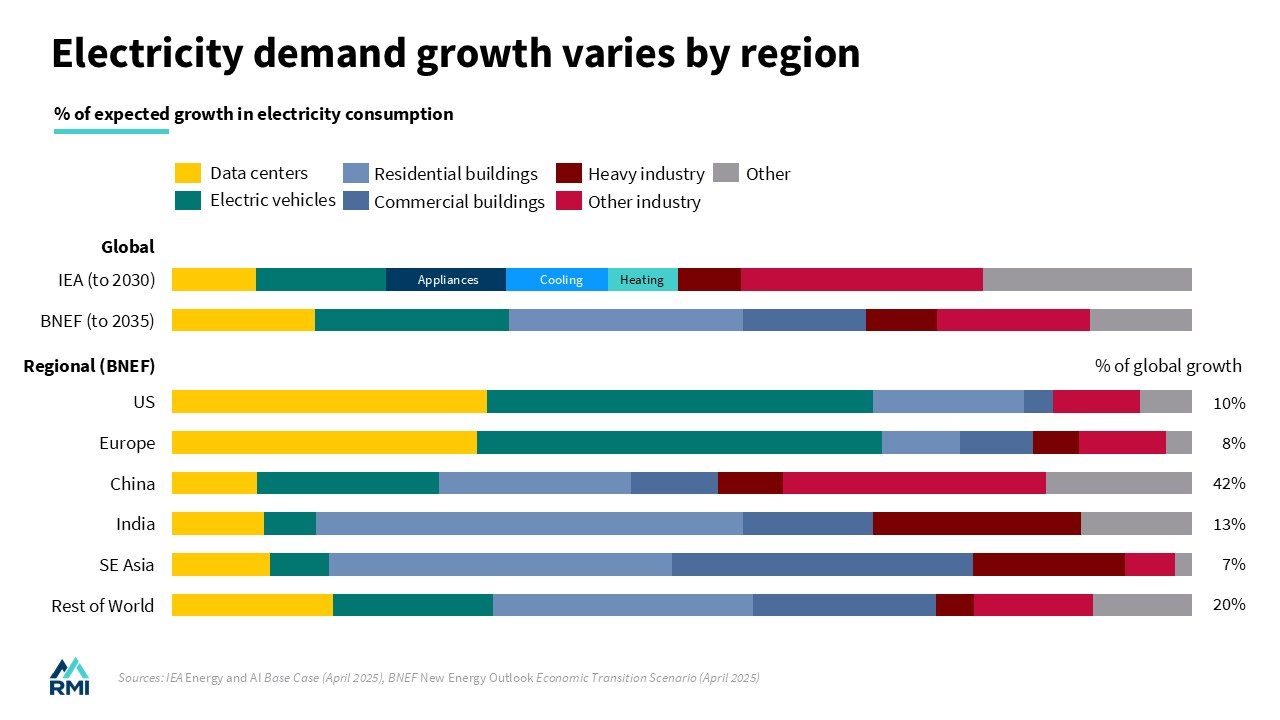Three Priorities for a New Age of Electricity Load Growth
Demand growth is being caused by more than data centers, and rising electricity costs call for system solutions.

Spark Chart , Strategic Insights | July 31, 2025
We are in a new age of electricity demand. As the recent International Energy Agency (IEA) report reminds us, electricity demand is seeing some of its highest growth rates in the past decade. Headlines keep coming on how data centers are to blame. While this may be true in some local cases, most of the world has many demand sources that are rising together in parallel. As electricity costs rise for everyday people, it’s important to focus on three key solutions: fast, flexible capacity; a stronger grid; and energy efficiency.
The world is adding a Japan-sized amount of electricity demand every year — nearly half of that from China alone. However, the sources of load growth differ substantially. In developed regions like the United States and Europe, most new demand will come from data centers and electric vehicles, according to the latest analysis from Bloomberg New Energy Finance (BNEF). Yet in fast-growing Asia and Africa, a strong majority of growth will come from buildings, as cities grow and citizens gain access to essential appliances (such as air conditioners under increasing extreme heat). Industrial sources are also crucial, especially in China, where electrification is happening faster than anywhere.
All this growth comes with real risks of rising costs. Wholesale electricity prices in the United States and Europe have risen by 30–40 percent in the past year alone, largely due to higher gas prices. Renewable energy can reduce these risks, offering cheaper electricity than fossil fuels in more than 90 percent of new projects. However, barriers to clean supply, from grid constraints to cost of capital issues, are limiting deployment and pushing up prices.
It’s time to overcome those barriers while scaling complementary solutions. There are many ways to bring on clean capacity in fast, flexible ways — from virtual power plants to low-cost, low-barrier new generation (led by solar and batteries). In parallel, alternative transmission technologies can strengthen the grid, enhancing transmission upgrades and avoiding cost hikes at a much faster rate. Finally, opportunities abound to reduce energy waste and accelerate efficiency across data centers, air conditioners, and other end uses — avoiding demand while raising our wellbeing.
No matter the sources, electricity load growth is the new reality around the world. It’s time to meet that reality with solutions that can cut costs and bring power to us all.